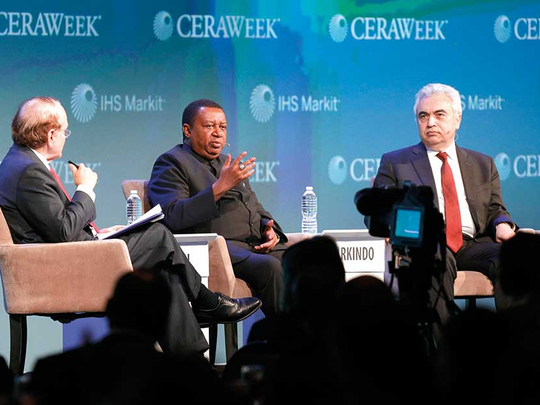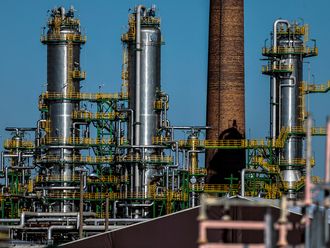
Houston: For the last two years, they’ve been locked in a battle for supremacy of the oil market. But for a couple of hours in Houston over dinner on Sunday, the head of Opec and leaders of some of America’s top shale producers shared a table for a rare off-the-record chat about the future of oil.
Mohammad Barkindo, secretary-general of the Organisation of Petroleum Exporting Countries, dined with 20 or so US shale executives including Scott Sheffield of Pioneer Natural Resources Co, John Hess of Hess Corp, Robert Lawler of Chesapeake Energy Corp and Tim Leach of Concho Resources Inc, according to people who attended the event and asked not to be named because it was private.
Mark Papa, the oilman who helped create the US shale industry more than a decade ago, also attended the dinner at a restaurant in downtown Houston on the eve of the annual CERAWeek conference. Halliburton President Jeff Miller was among representatives of the oil-service sector.
The sides agreed in principle that the market should be better balanced and lower inventories would be beneficial to everyone, according to the people. But while the shale producers signalled they weren’t ready to give up on the growth they see ahead, Opec indicated it wants higher prices, even if it means enriching the shale companies, they said.
“It was a very good exchange of information and views about oil,” Hess Chief Executive Officer John Hess said in an interview Tuesday. “I really commend the Opec secretary general for the outreach. It was a good talk.”
Spokespeople for Pioneer, Chesapeake and Concho Resources weren’t immediately available to comment on the dinner when reached outside of regular business hours. Mark Papa couldn’t be reached and Halliburton declined to comment.
New competition
For Opec, US shale producers are a new source of competition, able to respond faster to price signals than traditional suppliers. Since May, US explorers have almost doubled the number of active oil-drilling rigs in the country, helping lift the nation’s production above 9 million barrels a day for the first time in almost a year.
The International Energy Agency on Monday forecast they’ll ramp up output by 1.4 million barrels a day from now until 2022 even if oil prices remain at current levels below $60 a barrel.
“We are witnessing the start of a second wave of US supply growth,” Fatih Birol, the IEA’s executive director, told Bloomberg News in an interview in Houston on Monday.
For shale companies, Opec can determine whether they enjoy high enough oil prices to make money, as is the case today, or they face losses and even bankruptcy, as many did in 2015 and early 2016 when West Texas Intermediate, the US benchmark, fell to a 12-year low of less than $30 a barrel.
Daniel Yergin, the oil historian-cum-consultant who hosts CERAWeek, has described the relationship between Opec and shale as “mutual coexistence”, with both sides learning to live with prices that are lower than they would like.
“They are asking questions, the same questions we are asking,” Barkindo told reporters on Sunday night. “We are all learning, because this is new in the world of oil.”












